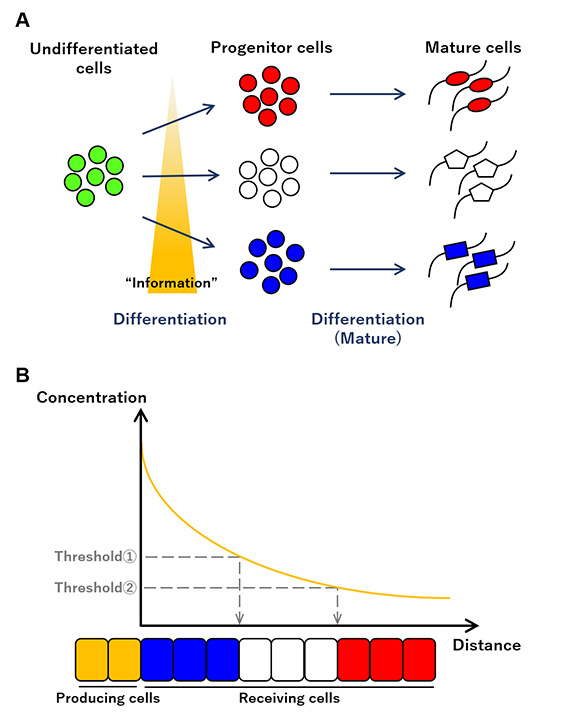2022.06.01
Production and arrangement of diverse cells during development
Developmental Biomedical Science ・ Assistant Professor ・ Takuma Shinozuka
There are multiple types of cells in the body of multicellular organisms, each of which has its own function. These diverse cells are arranged in a specific order in the tissue. As a mechanism for creating such cell diversity and conservation of arrangement, it has been considered that secreted signaling proteins are produced and secreted from the specific cells in a tissue, and they form a concentration gradient in the tissue. It is also known that the cells differentiate into specific functional cells when the concentration of secreted signaling proteins is interpreted (Figure 1). In this article, I will first explain the concept of the mechanism by which cell diversity is achieved while they are arranged in a specific order. In the latter part, I will pick up the central nervous system as an example in which this concept can be applied. During the central nervous system development, cell differentiation is actually controlled by “positional information” given by secreted signaling proteins. I will outline the mechanism by which various neurons in the central nervous system form domains. Finally, I would like to introduce the diversity and regional identity of glial cells that we are focusing on, including future prospects.
Takuma Shinozuka NAIST Edge BIO, e0001. (2022).

